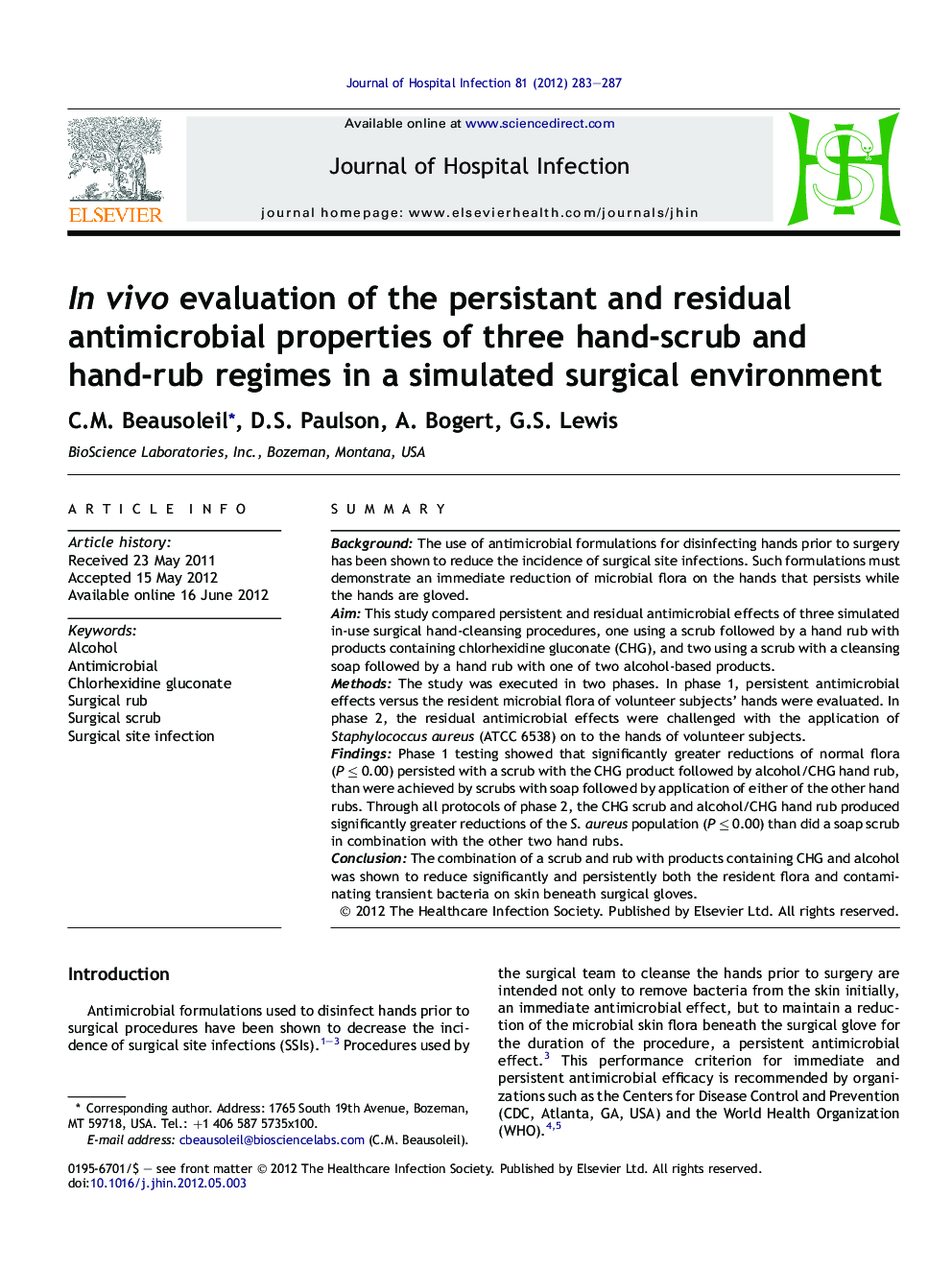| Article ID | Journal | Published Year | Pages | File Type |
|---|---|---|---|---|
| 3371941 | Journal of Hospital Infection | 2012 | 5 Pages |
SummaryBackgroundThe use of antimicrobial formulations for disinfecting hands prior to surgery has been shown to reduce the incidence of surgical site infections. Such formulations must demonstrate an immediate reduction of microbial flora on the hands that persists while the hands are gloved.AimThis study compared persistent and residual antimicrobial effects of three simulated in-use surgical hand-cleansing procedures, one using a scrub followed by a hand rub with products containing chlorhexidine gluconate (CHG), and two using a scrub with a cleansing soap followed by a hand rub with one of two alcohol-based products.MethodsThe study was executed in two phases. In phase 1, persistent antimicrobial effects versus the resident microbial flora of volunteer subjects' hands were evaluated. In phase 2, the residual antimicrobial effects were challenged with the application of Staphylococcus aureus (ATCC 6538) on to the hands of volunteer subjects.FindingsPhase 1 testing showed that significantly greater reductions of normal flora (P ≤ 0.00) persisted with a scrub with the CHG product followed by alcohol/CHG hand rub, than were achieved by scrubs with soap followed by application of either of the other hand rubs. Through all protocols of phase 2, the CHG scrub and alcohol/CHG hand rub produced significantly greater reductions of the S. aureus population (P ≤ 0.00) than did a soap scrub in combination with the other two hand rubs.ConclusionThe combination of a scrub and rub with products containing CHG and alcohol was shown to reduce significantly and persistently both the resident flora and contaminating transient bacteria on skin beneath surgical gloves.
